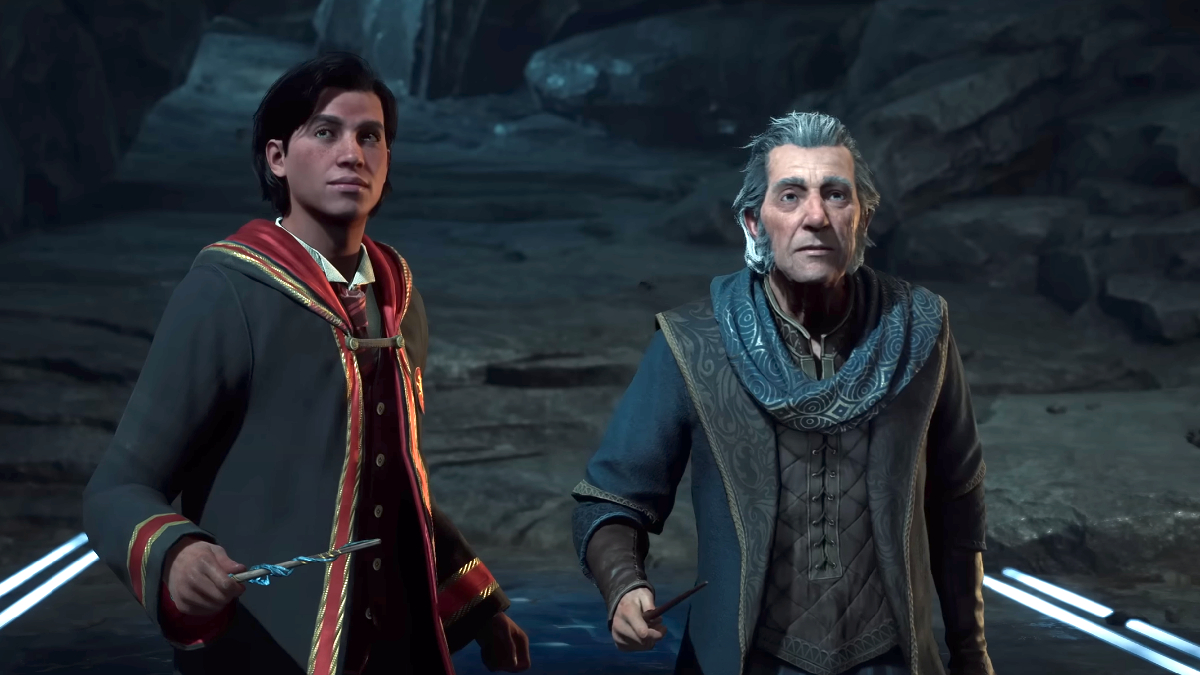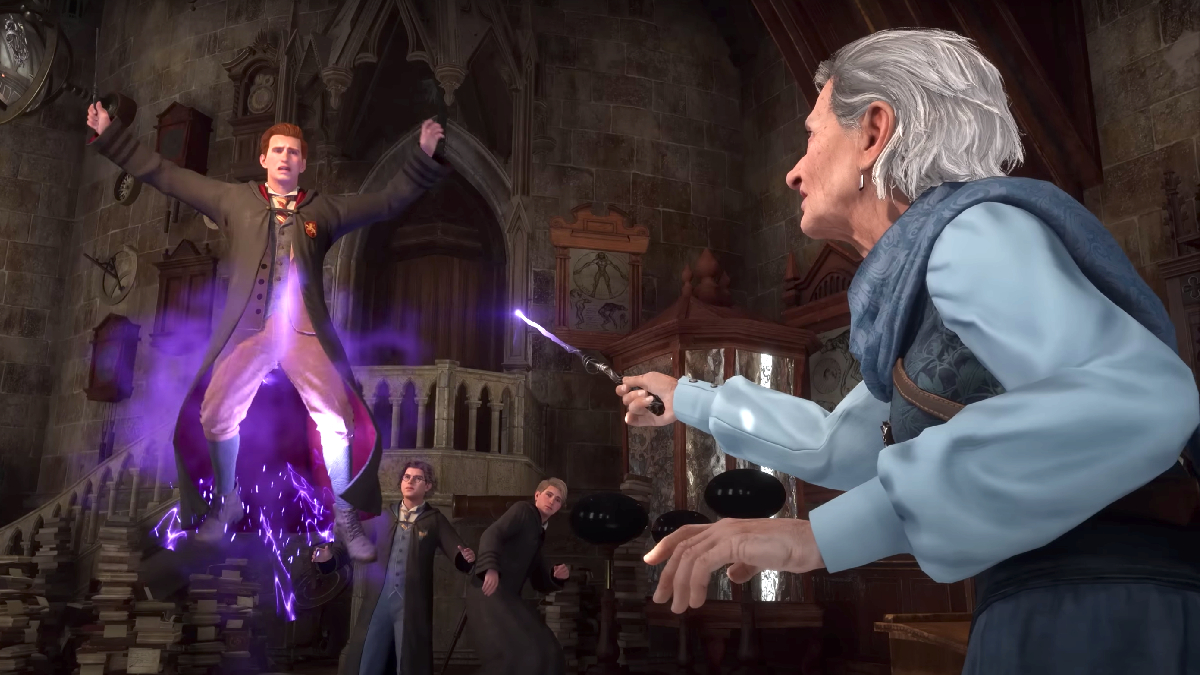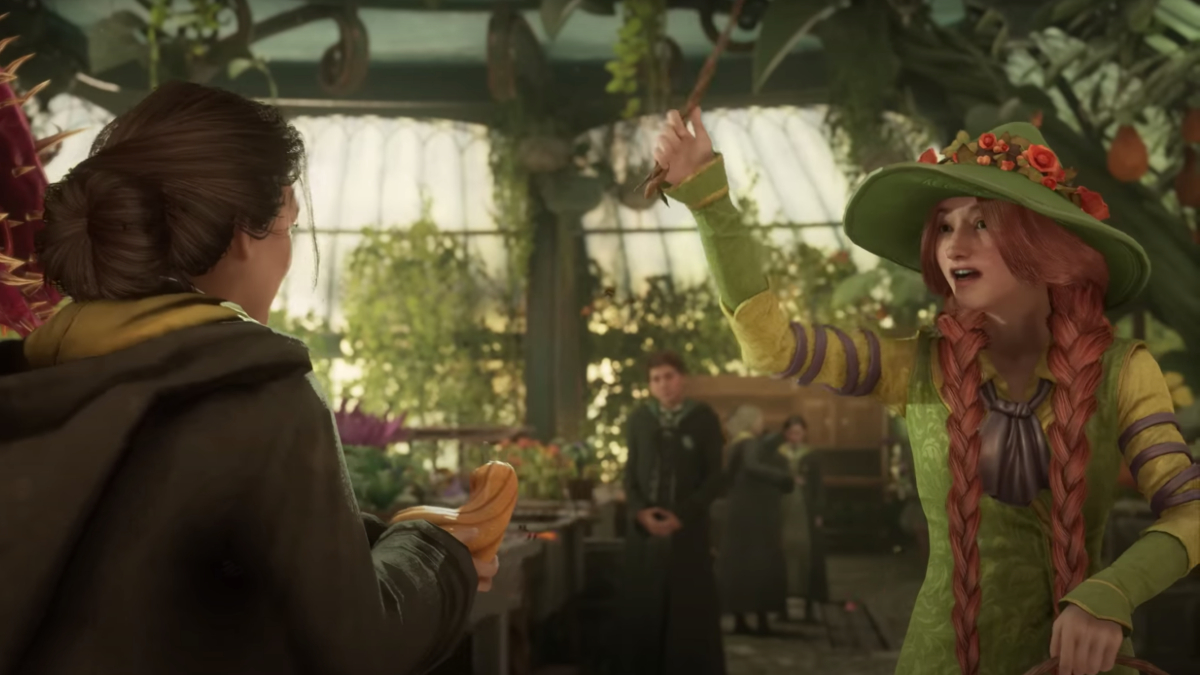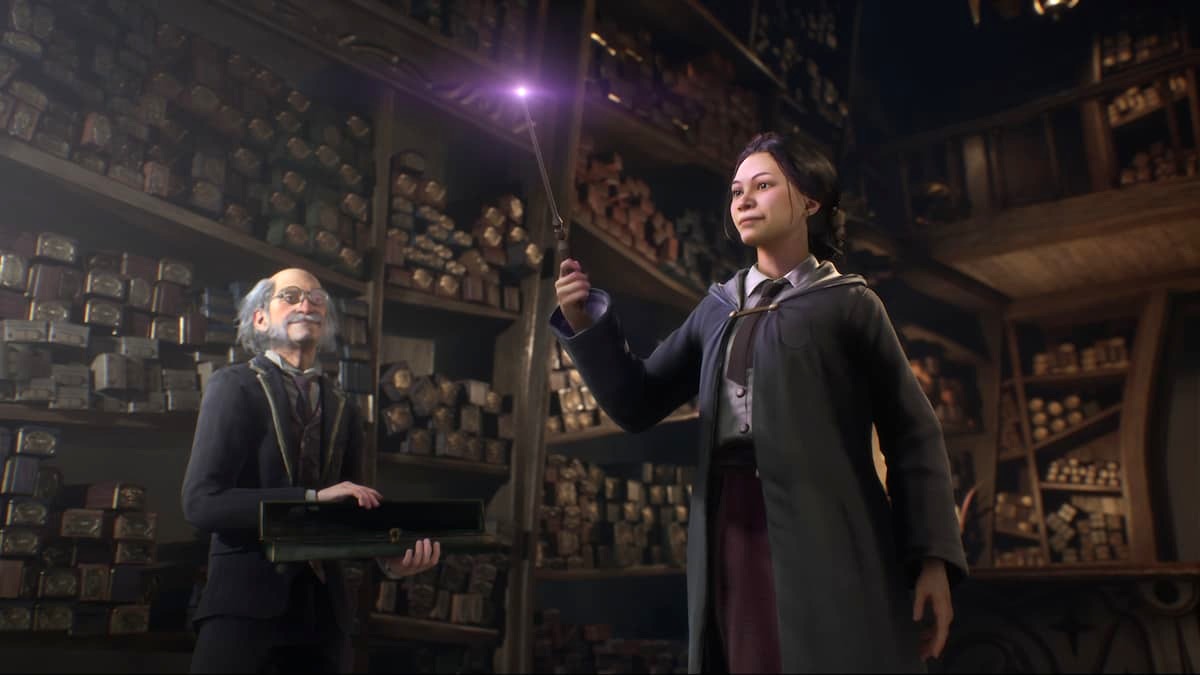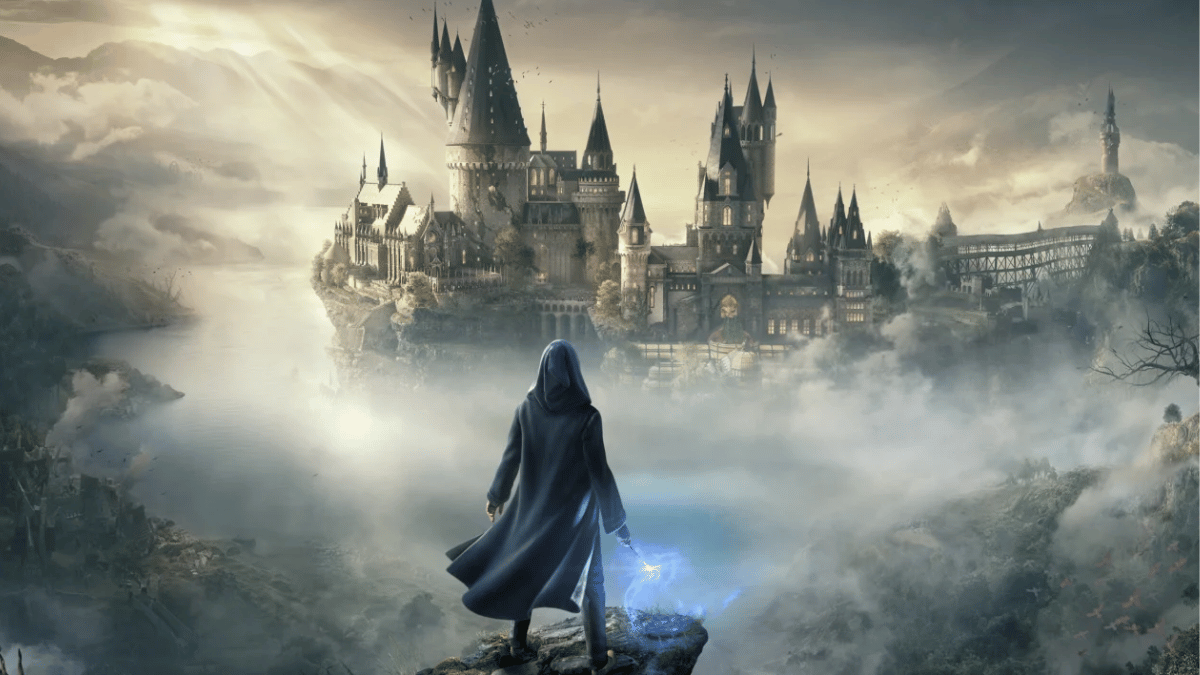Let’s address the elephant in the room. Yes, Hogwarts Legacy has been mired in controversy for the past few years. Yes, the creator of the Wizarding World (the temptation to call her “She Who Must Not Be Named” is strong) has used her fame to spread transphobic and trans-exclusionary feminist views. And yes, Avalance Software has endured multiple delays, a protracted development cycle, and a gameplay leak, not to mention a lead designer who parted ways with Warner Bros. after a few of his troubling YouTube uploads were spotted by fans and journalists.
There’s plenty to say about the ethics and morals of buying and playing a game as controversial as Hogwarts Legacy, and we’ve explored several of these topics leading up to its release. But, for the purposes of this review, we’re going to be focusing on the game itself to answer one simple question: is Hogwarts Legacy any good?
The answer, surprisingly, is yes.
Of course, it’s worth noting that Hogwarts Legacy hasn’t been saddled with many of the burdens its predecessors faced. The movie tie-in games were certainly popular for their time, but several of those adaptations were rushed to market in order to coincide with the film’s release, and if you were to give any of them — barring a few exceptions — a go today, the initial wave of nostalgia would quickly morph into a tsunami of uninspired gameplay.
Hogwarts Legacy, on the other hand, isn’t tasked with adapting an existing story, allowing the developers to flex their creative muscles a little and lay down a new foundation to build from. The story gets going rather quickly, with you playing as an incoming Hogwarts student who, for reasons that go unexplained, has never had any formal training and is starting off as a fifth-year. Compared to the fleshed-out characters and backstories commonplace in the books and films, the player character is a bit of a blank slate, though this has the added benefit of allowing you to customize them as you see fit.
Credit has to be given to the robust character creator, which not only lets you pick traits like hairstyle, skin tone, and face shape, but attributes like body type, vocal pitch, facial scars/freckles/moles, and whether you’d like to be referred to as either a wizard or witch (which isn’t linked to body type). In fact, throughout the entire game, your character will always be referred to using they/them pronouns, or by a variation on “new fifth-year student.” The one thing that does set you apart from your fellow students is your unique latent magical abilities.
After a rather explosive opening, you quickly discover that you have the ability to both see and manipulate a mysterious ancient magic, which catches the attention of Professor Eleazar Fig, who quickly takes on the role of mentor. As expected, there are a few nefarious forces working in the shadows to harness this ancient power for themselves; specifically, Ranrok, the leader of a Goblin rebellion, and Victor Rookwood, who commands his own group of dark wizards. Of course, it doesn’t take long before both set their sights on you, leaving you to balance your magical education and investigation into your mysterious powers, all while trying to not get yourself killed by wizards and goblins alike.
It makes for an engaging tale, even if most of the main quests devolve into a National Treasure-style hunt as you hop from one area to another, hunting for the next magical bauble or McGuffin needed to progress the story further and shed more light on the overarching mystery. What is (largely) responsible for the game’s narrative working as well as it does is the colorful cast of characters, all of whom are excellently voice-acted and animated, though I have a sneaking suspicion a vocal minority will cry afoul at Hogwarts Legacy‘s style of facial animation. With the game taking place in the late 1800s with little to no overlap with the established lore, there’s little in the way of returning characters, though a few familiar family names — Ollivander, Weasley, Black, and Gaunt — do pop up.

Still, the brand-new characters are the main draw, with a few select students popping up not only in main quests but in their own “Relationship Quests,” each sporting an ongoing side-story that frequently weaves in and out of the core narrative. These missions in particular feature some of the game’s best moments — one that centers around infiltrating a fortress run by animal poachers, culminating with a hasty escape on a Hippogriff, comes to mind. That’s not to say that the plain-old side quests are slouches either. They run the gamut from tracking down hard-to-find items, unlocking secret areas of Hogwarts and solving puzzles, taking out enemy encampments, and a few more I won’t spoil here.
Once Hogwarts Legacy has made its way onto store shelves and digital storefronts, I imagine that it’ll immediately be compared to a few of its contemporaries, and those observations aren’t without merit. In many ways, it borrows and builds upon some of the best that the open-world genre has to offer. It’s hard to convey it in writing alone, but Hogwarts Legacy is a massive game, with plenty to do and see. There are a variety of forests, hamlets, swamps, and fortresses to explore, and it’s hard not to draw parallels to The Witcher 3 or Elden Ring when you’re blasting a gargantuan troll with every spell under your belt, or raiding a cliffside cave for whatever treasure might lie inside. And while I wouldn’t necessarily put it in the same league as Breath of the Wild, Hogwarts Legacy does embody that same “if you can see it, you can go there” tenet. Once you begin exploring the surrounding areas, it’s hard not to be overwhelmed with the sheer number of things to do, encampments to clear out, and side quests that need completing.
What’s even more surprising is that I find myself comparing the game’s combat to something like Sony’s recent God of War and Spider-Man revivals. A far cry from the lifeless third-person shooting galleries seen in both Deathly Hallows games, Hogwarts Legacy demands a tad more from the player. Spells are assigned to the face buttons and are each assigned their own category and matching color — red for damage, purple for force, yellow for control, and so on. It doesn’t take long to come to grips with the potential for combos — before long, I settled on the tried-and-true method of disarming my enemy with Expelliarmus, levitating them with Levioso, using Accio to pull them towards me, and finally, unleashing a short-range Incendio inferno, all while peppering them with the unnamed, basic spell attack you always have access to.
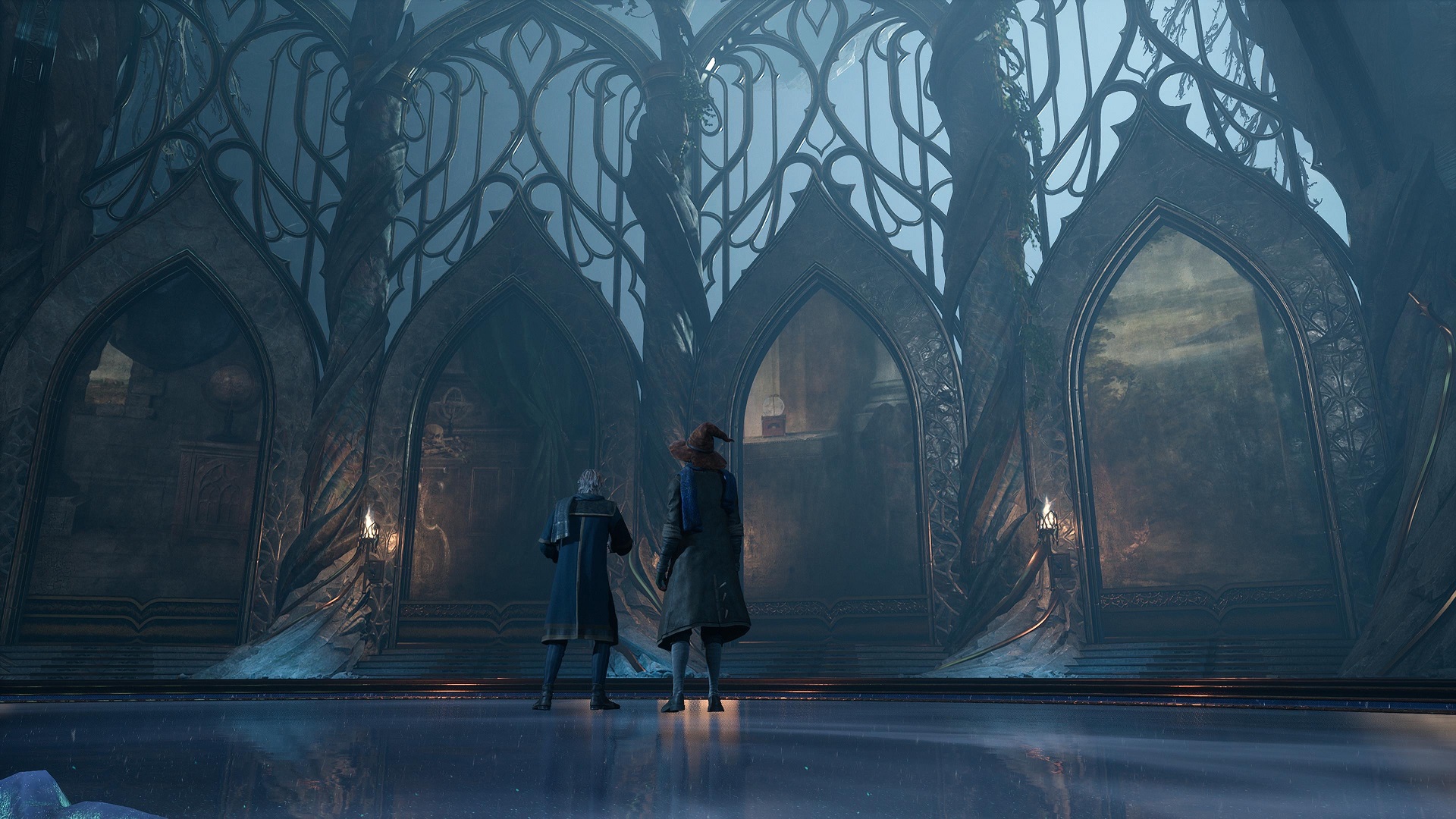
There’s a lot to keep track of, especially since you will rarely find yourself fighting a single enemy. To simplify things, your character will automatically direct their attacks toward the enemy you’re facing, though there’s a manual lock-on for those moments that demand precision. A well-timed button press can deflect most spells, and you can even counter-attack, assuming you’re able to time your parries correctly. You’ll also face off against goblins and monsters that favor close-ranged combat, which can be avoided by dodge-rolling. Your spells are tied to cooldowns, so any button-mashers out there will either become intimately familiar with the aforementioned filler spell or have to learn to juggle and swap out between all the spells at their disposal. As you progress, you’ll also find that goblins and dark wizards rely more and more on colored shields that can only be broken by using a spell of a corresponding color.
As you can imagine, more crowded fights can get rather hectic and chaotic, though these often make for the most visually exciting battles, with spells firing off left and right as you dodge and blast your way to success. Racking up combos and avoiding damage also fills up your ancient power gauge, allowing you to unleash devastating special attacks, which are a treat to watch even though there are only a small handful of recycled animations.
Thankfully, you always have your life as a student to fall back on when you need a break from all the action. There are a variety of classes to attend throughout the year, but to cut down on the tedium, these sections are kept rather brief, and after you’ve attended a class for the first time, any additional lectures will be replaced by a short and sweet montage — to be honest, each class you attend is just the preamble to a conversation or quest with a teacher or other student. Outside of academia, Hogwarts is home to plenty of collectibles to track down and even more side quests and distractions, with everything collated into a Field Guide, which keeps track of your current gear, inventory, quests, and challenges.
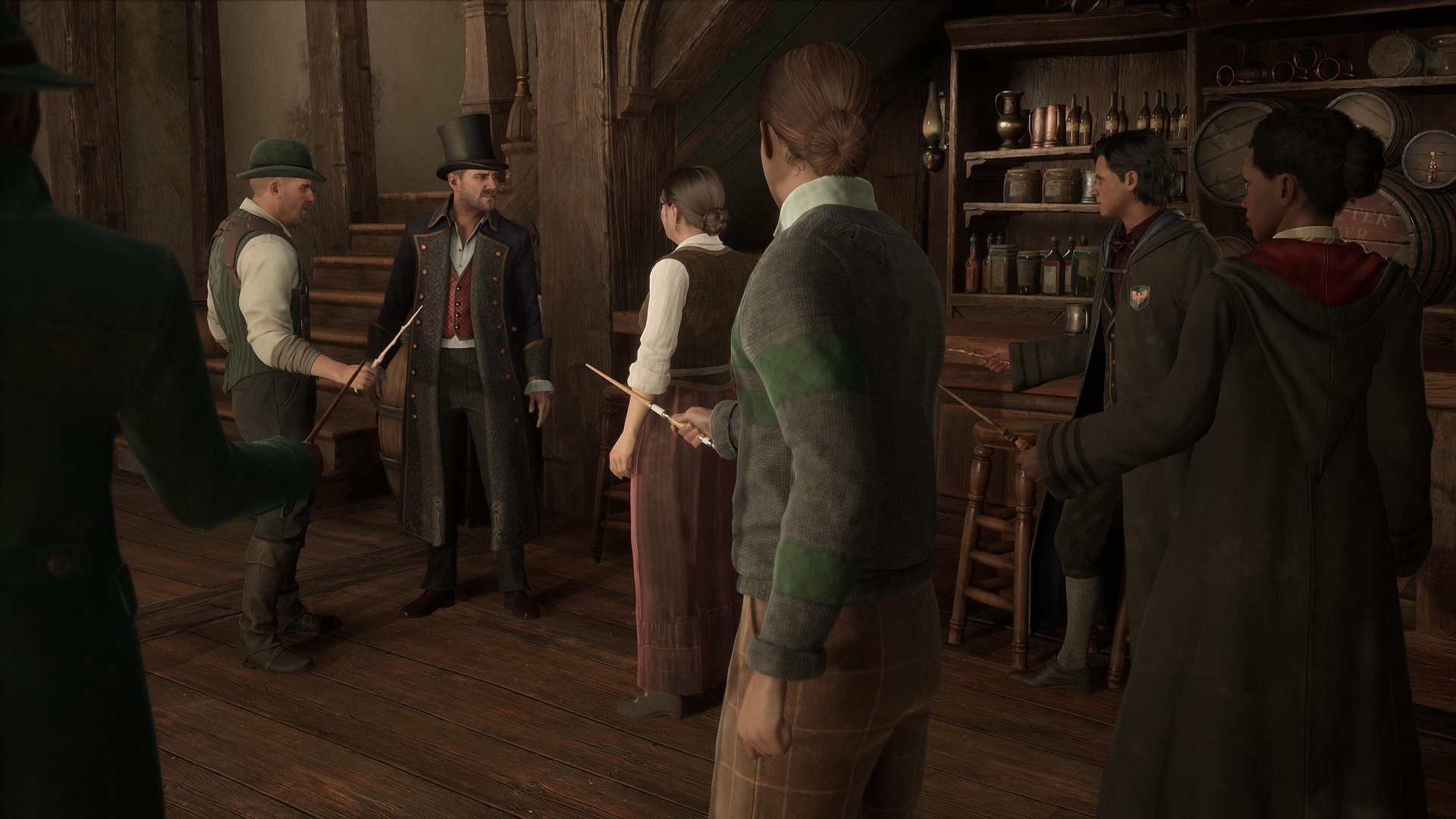
A lot of love has been poured into making Hogwarts Legacy look and feel like the real thing, and in almost every aspect, Avalanche Software has delivered on that lofty goal. From the layout and design of the castle itself, the easter eggs and references to the books and films, and the quote-unquote aesthetic, it’s an incredibly impressive package, especially considering all the bumps and obstacles the game has faced leading up to its release.
I say all this because given how well-crafted most of Hogwarts Legacy is, the niggling issues and shortcomings stick out that much more. For example, take the gear system. While your character does level up, granting you more health and skill tree options, your attack and defense ratings come from equipable clothing and gear, which you’ll get for completing missions, but mostly, you’ll find from exploring the environment, solving puzzles, and opening up chests. It doesn’t take long to realize that there’s little in the way of unique, powerful gear. For the most part, stumbling upon a new hat or robe is a dice roll — you’ll either end up with a rare or legendary item that’s worth equipping right away, or a common pair of glasses and gloves that will be sold for cash, which is the primary way of making money in-game.
As a result, this lets the developers do something that many shy away from; creating content that can easily be missed. In fact, there’s no completion tracking when it comes to gear, and the same goes for some environmental puzzles. On the one hand, this laissez-faire attitude means that there’s little handholding when it comes to figuring out tricky puzzles or how to get to an out-of-reach chest because at the end of the day, you won’t be missing out on a crucial upgrade, or anything of importance really. But this also makes it difficult to get excited about the prospect of exploring every nook and cranny, as there’s a good chance that you won’t end up with anything valuable at the end of it.
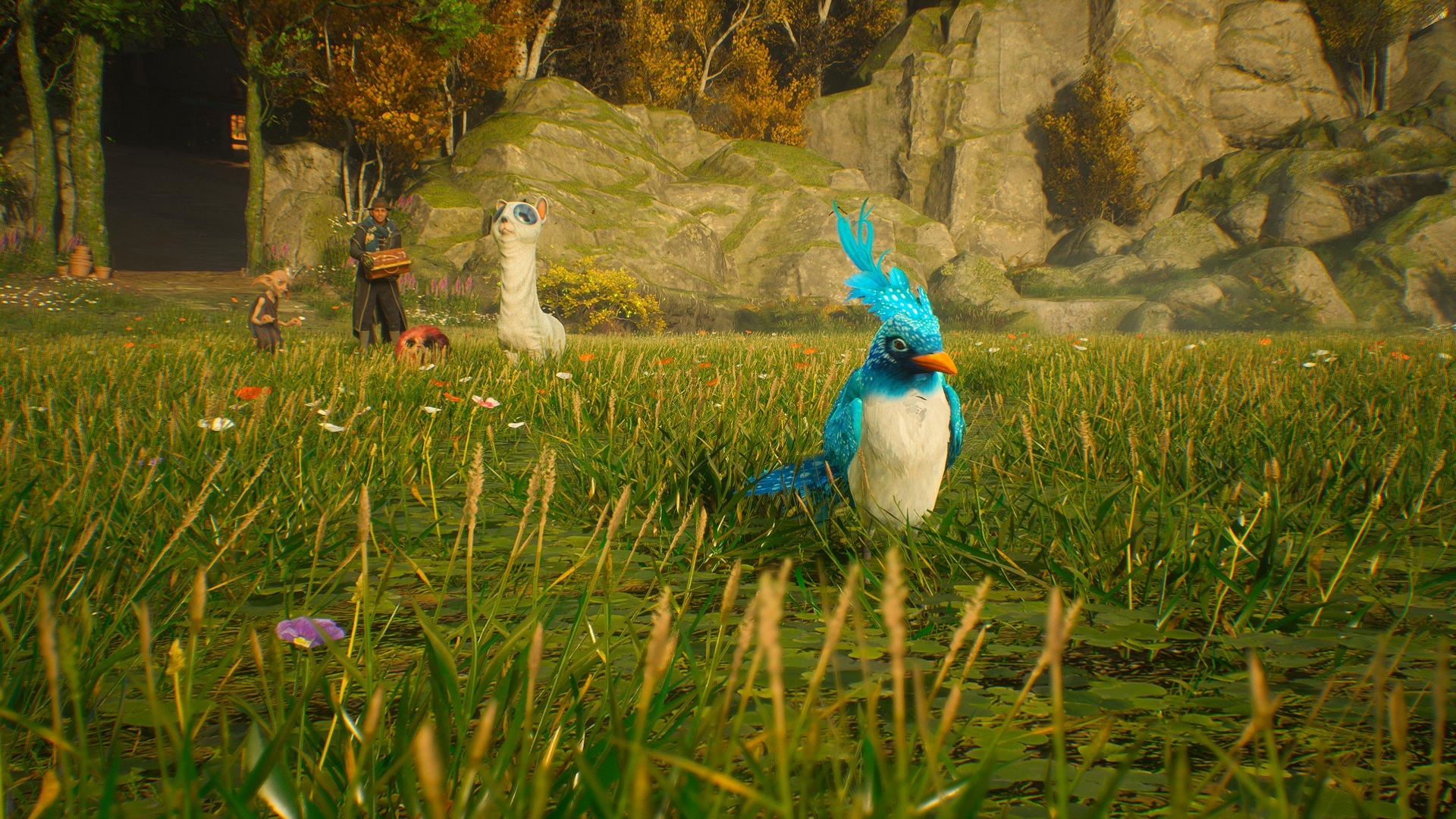
If anything, there’s a strong argument that Hogwarts Legacy is too focused on collecting inconsequential items. Adding it all up, there are a whopping 618 collectibles to track down or buy, and that’s only taking into collectibles; once you factor in the combat and exploration challenges, as well as the various potions that need brewing and animals that need rescuing, the platinum trophy begins looking less like a badge of honor and more like a tedious slog. I spent just over 22 hours beelining through the main story, but anyone looking to reach 100 percent completion will likely spend three to four times that.
Aside from using color to assign rarity to gear, Hogwarts Legacy will undoubtedly be compared to Destiny 2 for adopting the latter’s cursor-style menu navigation. Personally, I don’t think it works very well in this particular case, but I’m sure others will feel right at home with it. Still, the biggest offender might be the in-game maps. The 3D view of Hogwarts castle can be difficult to navigate, while the 2D minimap is often cluttered, especially since it’s trying to display multiple floors at the same time. I’m sure most players will come to terms with these issues — I know I did — but it does cast a shadow during the first few hours.
It would be easy to call Hogwarts Legacy the “best Harry Potter game of all time,” but it would also be a tad unfair. After all, the movie tie-ins we grew up with were from a different era, with rushed development cycles and numerous technical and hardware limitations to contend with. What is fair to say is that Hogwarts Legacy is, by far, the most fleshed-out and authentic Wizarding World game to date. It’s tough to say what’s in store for the future, but if Warner Bros. and Avalanche Software can weather the storm and emerge relatively unscathed, they’ll be in a good position to continue elevating the franchise to new heights.
This review is based on the PlayStation 5 version of the game. A copy was provided by Warner Bros.
Great
The chips might have been stacked against them, but Warner Bros. and Avalanche Software have delivered on their promise. Hogwarts Legacy is the game that fans have been waiting for, laying down a solid foundation to build off of moving forward.
Hogwarts Legacy Review

